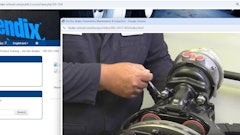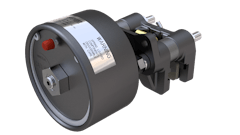Bendix Commercial Vehicle Systems LLC endorses the notice of proposed rulemaking issued jointly by the National Highway Traffic Safety Administration (NHTSA) and the Environmental Protection Agency (EPA) to establish a comprehensive Heavy-Duty National Program.
The HD National Program is meant to reduce greenhouse gas emissions and increase fuel efficiency in commercial medium- and heavy-duty vehicles manufactured between 2014 and 2018. The proposed standards would reduce CO2 emissions and fuel consumption 7% to 20% in affected vehicles by 2017, compared to 2010 baseline measurements.
“Bendix fully supports the proposed rulemaking and its goals of cleaner air, reduced fuel usage, and progress toward a new generation of cleaner vehicles,” says Joe McAleese, Bendix president and CEO. “In addition, we are committed to policies that enable the introduction of new technologies needed to support sustainable mobility. We believe in product innovation that can lead to a sustainable future for everyone.”
The final ruling is anticipated to include a list of advanced and innovative technologies, including, but not limited to, hybrid-related technologies that will provide credits to commercial vehicle and engine OEMs striving to meet the clean air and fuel efficiency requirements. Bendix supports the proposed categories and has requested that NHTSA and EPA add more technologies to the list. Suggested additions fall into categories of weight, transmission/drivetrain, driver management and coaching, engine, and tires and wheels. Bendix offers product solutions in each of these categories to help OEMs, fleets, and owner-operators meet the proposed HD National Program standards.
In the recommended advanced technology category of weight, air disc brakes can increase fuel efficiency by reducing vehicle weight. To meet the reduced stopping distance (RSD) rules taking effect August 1, 2011, trucks using foundation drum brakes will require wider and heavier brakes. Trucks equipped with Bendix ADB22X air disc brakes can offer a weight savings – up to 60 pounds per truck – over the wider drum brakes, while meeting RSD standards.
Bendix Wingman Advanced – A Collision Mitigation Technology also contributes to reduced fuel usage. As a driver management technology, it is designed to deliver driver-friendly, forward collision warning and mitigation using full vehicle and braking system integration. In addition to the safety benefits, the adaptive system can help drivers stay at cruise speeds longer, resulting in fuel savings as high as 10 percent, depending on fleet operations.
Bendix recommends certain engine technologies be eligible for advanced and/or innovative technology credits. The three optimized components in the company’s cost-effective and environmentally friendly air management energy system can help meet the requirements of the proposed HD National Program. The Bendix PBS Air Injection Booster, Bendix Electronic Air Control (EAC) Dryer, and Bendix Turbo-Clutch Air Compressor work together to maximize engine efficiency and improve emissions. A commercial vehicle operating with all three components can realize over 5% in fuel savings. Further savings are possible when the PBS Air Injection Booster is combined with transmission and drivetrain optimizations.
“The first of its kind, Bendix PBS air injection improves fuel economy and reduces emissions while also helping to increase engine performance,” says Steve Mance, Bendix vice president and general manager for the charging business group. “Our fleet customers will see a significant ROI when they integrate the PBS engine booster, EAC dryer, and the Turbo-Clutch Air Compressor.”
A tire management system is another of the company’s technology recommendations in response to the HD National Program proposal. The SmarTire tire pressure monitoring system by Bendix CVS monitors the pressure and temperature of each tire on a commercial vehicle to provide real-time, temperature-compensated tire pressure information to the driver or maintenance technician. Keeping commercial vehicle tires at proper inflation levels can deliver up to an additional 2% in fuel savings.
NHTSA and EPA published the notice of proposed rulemaking in November 2010 in response to President Obama’s May 2010 directive to take coordinated steps to produce a new generation of clean medium- and heavy-duty vehicles. The agencies’ goal is to issue a final ruling by July 30, 2011. The notice of proposed rulemaking joins a similar one the agencies issued in April 2010, also in response to a presidential directive, aimed at passenger cars and light-duty trucks for model years 2012-2016.
![Sa P75 I Sahr[80]](https://img.oemoffhighway.com/mindful/acbm/workspaces/default/uploads/2025/10/sa-p75-isahr80.Cn3n79HB4H.jpg?auto=format%2Ccompress&fit=crop&h=100&q=70&w=100)




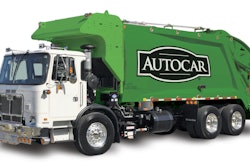
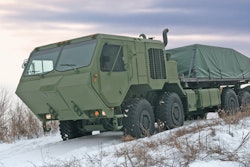
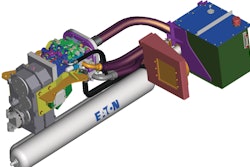
![Sa P75 I Sahr[80]](https://img.oemoffhighway.com/mindful/acbm/workspaces/default/uploads/2025/10/sa-p75-isahr80.Cn3n79HB4H.jpg?ar=16%3A9&auto=format%2Ccompress&fit=crop&h=135&q=70&w=240)



